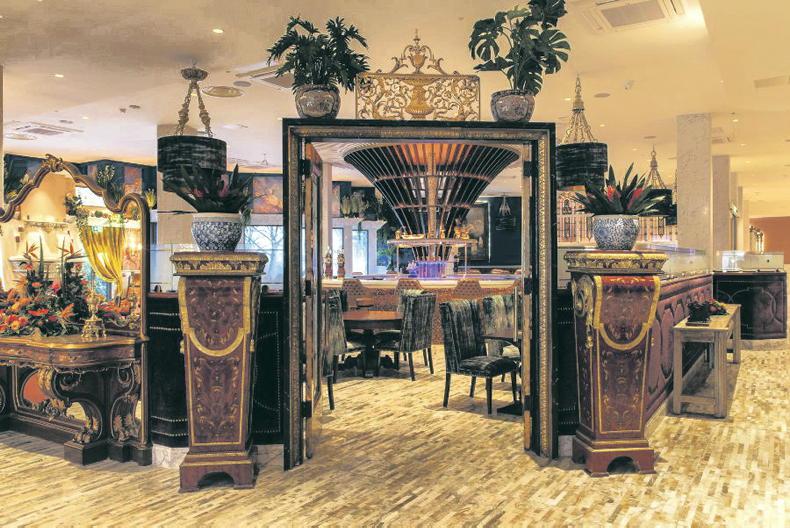In a series about endearing engines, I am about to take a risk.
Maybe this particular engine is more memory etching than endearing but hey, what an engine!
I was 12 years old before I had my first ride on a train. The trip was from Ballymote to Dublin and right from the start, I was awe-struck.
Images and sounds from all of the stories I had ever heard came to life that day as I finally got to experience the many things my older siblings had mentioned from their travels.
But nothing prepared me for the massive black and orange coloured locomotive that pulled into the station. It was a big square ball of throbbing, hissing power, more akin to an enormous mobile diesel-fired electricity generator than anything else.
Although prototype diesel locomotives ran in Britain before World War II, the railways here in Ireland changed over much more rapidly from steam to diesel. This was because of Ireland’s limited coal reserves and an ageing steam locomotive fleet that left Córas Iompair Éireann (CIE) with more headaches than positive travel reviews.
These beasts packed every ounce of 960 horsepower, weighed 67 tonnes and had a maximum speed of 76 mph
When CIE decided to finally end the use of steam locomotives, two batches of locomotives were ordered from General Motors (yes, General Motors in America). The first batch, the B121 Class, was delivered in 1961. These beasts packed every ounce of 960 horsepower, weighed 67 tonnes and had a maximum speed of 76 mph.
The new locomotives proved an instant success, the only drawback being the single cab, which necessitated the locomotive being turned at the end of each journey. The second batch of 37 locomotives (B141 Class), delivered in 1962, were fitted with a cab at each end to overcome this problem and these bad boys unloaded 1,100 horsepower when the hammer was fully down. I think it must have been one of these that I encountered on my first trip.
Time travel by train
For me on that first day, riding that train proved to be a kind of time travel. I was leaving behind long summer days, the hayfield and short trousers. I was speeding in my Confirmation best to the Big Smoke through exotic places such as Dromod, Mostrim and Enfield. The generous double, no triple, high-backed seats were from another age and while there may not have been any walnut on display, they had a deep-pile fabric covering in a patriotic dark green. As the carriage stood still, fields and farms and whole villages whizzed by. Suddenly, the meeting of another locomotive from the same herd, thundering in the opposite direction, caused a 120-mph explosion of earth, wind and fire prompting an immediate trip to the leithreas as well as a frightening reminder to “close the flippin window!”
I had to negotiate the dark annex between the carriages where the deafening drum-roll of clattering wheels and jangling chains
Undertaking a trip to the toilet on this speeding horse of steel was not for the fainthearted. I had to negotiate the dark annex between the carriages where the deafening drum-roll of clattering wheels and jangling chains was reminiscent of a scene from a World War II movie. Here, a misplaced foot could plunge the unsuspecting toilet-goer to a certain and bloody death amid rails, sleepers and steel spikes. It was almost easier to remain seated and soil oneself!
What an experience it was to stand on a platform and feel the ground shake beneath your feet
These locomotives may not have been endearing, and indeed they were probably highly inefficient, but they were savage machines. What an experience it was to stand on a platform and feel the ground shake beneath your feet as one of these monsters arrived in your station. That alone was worth the price of the ticket.
Read more
Endearing engines: the people's car
Endearing Engines: the David Brown Esquire
In a series about endearing engines, I am about to take a risk.
Maybe this particular engine is more memory etching than endearing but hey, what an engine!
I was 12 years old before I had my first ride on a train. The trip was from Ballymote to Dublin and right from the start, I was awe-struck.
Images and sounds from all of the stories I had ever heard came to life that day as I finally got to experience the many things my older siblings had mentioned from their travels.
But nothing prepared me for the massive black and orange coloured locomotive that pulled into the station. It was a big square ball of throbbing, hissing power, more akin to an enormous mobile diesel-fired electricity generator than anything else.
Although prototype diesel locomotives ran in Britain before World War II, the railways here in Ireland changed over much more rapidly from steam to diesel. This was because of Ireland’s limited coal reserves and an ageing steam locomotive fleet that left Córas Iompair Éireann (CIE) with more headaches than positive travel reviews.
These beasts packed every ounce of 960 horsepower, weighed 67 tonnes and had a maximum speed of 76 mph
When CIE decided to finally end the use of steam locomotives, two batches of locomotives were ordered from General Motors (yes, General Motors in America). The first batch, the B121 Class, was delivered in 1961. These beasts packed every ounce of 960 horsepower, weighed 67 tonnes and had a maximum speed of 76 mph.
The new locomotives proved an instant success, the only drawback being the single cab, which necessitated the locomotive being turned at the end of each journey. The second batch of 37 locomotives (B141 Class), delivered in 1962, were fitted with a cab at each end to overcome this problem and these bad boys unloaded 1,100 horsepower when the hammer was fully down. I think it must have been one of these that I encountered on my first trip.
Time travel by train
For me on that first day, riding that train proved to be a kind of time travel. I was leaving behind long summer days, the hayfield and short trousers. I was speeding in my Confirmation best to the Big Smoke through exotic places such as Dromod, Mostrim and Enfield. The generous double, no triple, high-backed seats were from another age and while there may not have been any walnut on display, they had a deep-pile fabric covering in a patriotic dark green. As the carriage stood still, fields and farms and whole villages whizzed by. Suddenly, the meeting of another locomotive from the same herd, thundering in the opposite direction, caused a 120-mph explosion of earth, wind and fire prompting an immediate trip to the leithreas as well as a frightening reminder to “close the flippin window!”
I had to negotiate the dark annex between the carriages where the deafening drum-roll of clattering wheels and jangling chains
Undertaking a trip to the toilet on this speeding horse of steel was not for the fainthearted. I had to negotiate the dark annex between the carriages where the deafening drum-roll of clattering wheels and jangling chains was reminiscent of a scene from a World War II movie. Here, a misplaced foot could plunge the unsuspecting toilet-goer to a certain and bloody death amid rails, sleepers and steel spikes. It was almost easier to remain seated and soil oneself!
What an experience it was to stand on a platform and feel the ground shake beneath your feet
These locomotives may not have been endearing, and indeed they were probably highly inefficient, but they were savage machines. What an experience it was to stand on a platform and feel the ground shake beneath your feet as one of these monsters arrived in your station. That alone was worth the price of the ticket.
Read more
Endearing engines: the people's car
Endearing Engines: the David Brown Esquire









SHARING OPTIONS